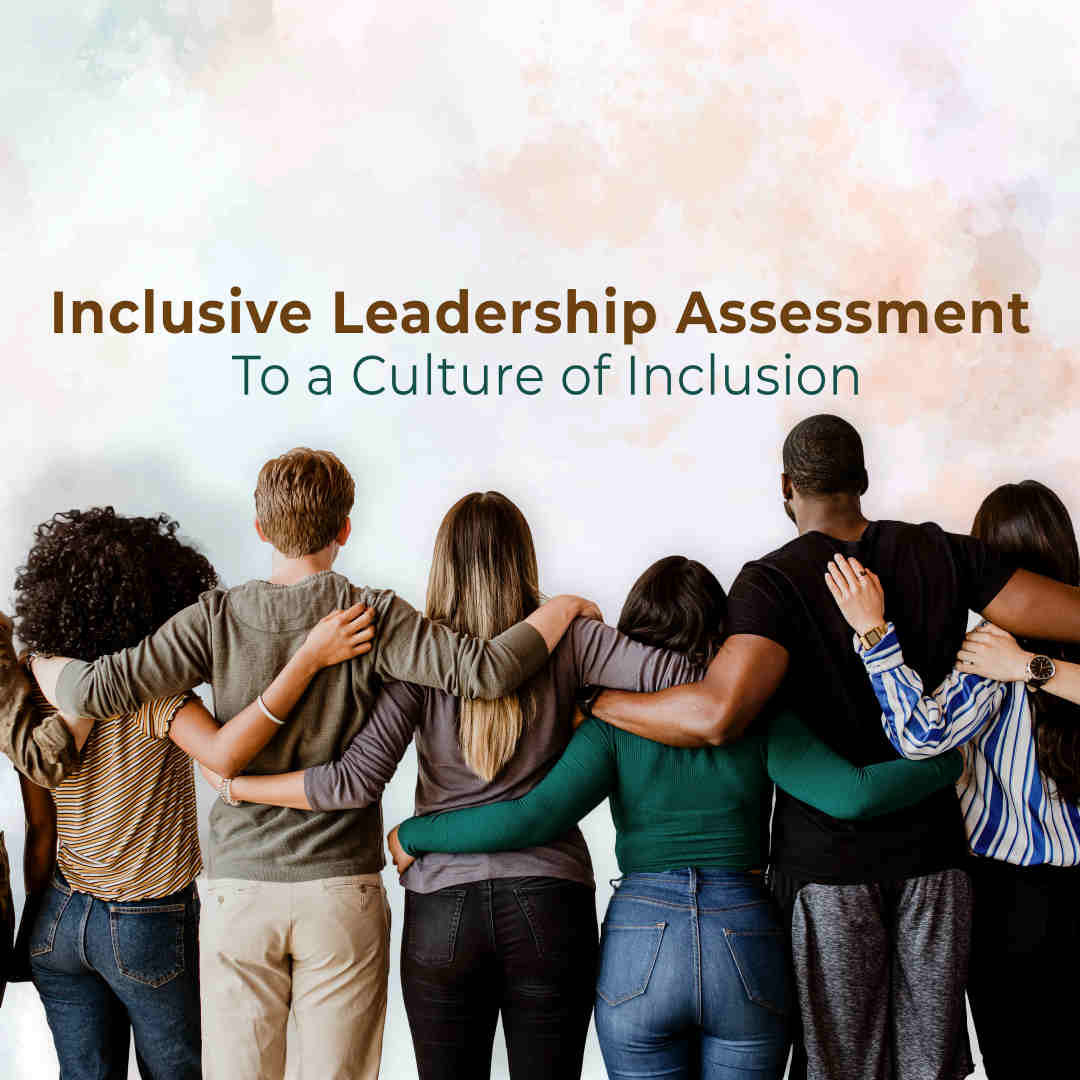Overview:
- A diverse workforce reaches its peak when leaders embrace inclusion.
- Assessments for inclusive leadership help you understand what actions make you more inclusive.
- Companies thrive and are equitable when leaders learn inclusivity.
Are you an inclusive leader?
Your team’s a real mix—people from all walks of life with different skin tones, beliefs, genders, and education. But the melting pot reaches its full potential when you lead with inclusivity.
How do you gauge how well you are as an inclusive leader? You might need an inclusive leadership assessment

What Is an Inclusive Leadership Assessment?
An inclusive leadership assessment is a systematic evaluation process. It is designed to measure and analyze your ability to create and maintain an inclusive workplace. It typically evaluates aspects like cultural competency, bias awareness, equitable practices, and empowerment.
Importance of Assessing Inclusive Leadership
Nowadays, it is possible to speak about the demand for inclusive workplaces. CNBC further noted that of the global workers, 77 percent prefer to work in DEI-focused organizations. Surprisingly, international enterprise managers also consider DEI to be crucial; 85% budget for DEI endeavors.
Identify Your Strengths
First, assessments for leadership inclusivity allow you to see your strengths to nurture a safe space for everyone. You might be surprised to learn areas where unconscious bias creeps in. It could also let you know where your communication styles could be more inclusive.
Self-Development
Once you identify areas where you can improve, you can focus your efforts on developing them. This might involve inclusive leadership training, education, and other steps to be an effective and inclusive leader.
Engaging the Employees
This assessment helps you find gaps in your inclusive leadership style that might be hindering employee engagement. So, you’ll have to improve your leadership style. Remember, employees who feel valued and heard are more engaged and productive.
Innovation Is Not Far-Reaching
Diversity means you have limitless thoughts and ideas. It becomes the breeding ground for innovation. When your team becomes truly inclusive, you’ll not run out of fresh ideas and better solutions. You’ll tap into the full potential of your workforce.
You’ll Attract Top Talents (For Sure!)
Organizations with strong inclusive leadership practices attract and retain top talents. The assessment will help you demonstrate your commitment to DEI. So, invest in your DEI and you’ll have an innovative and valuable workforce coming in.
How to Conduct an Inclusive Leadership Assessment
Conducting an inclusive leadership assessment for yourself is possible and can be a valuable exercise in personal development.
First, identify what are the key traits and behaviors of inclusive leadership. You can include cultural awareness, empathy, active listening, mitigating biases, and inclusive decision-making.
Second, reflect on your own experiences and behaviors. Consider situations where you demonstrated inclusivity or areas where you may have fallen short. Be honest and critical in your self-evaluation.

Third, use self-assessment tools. Use questionnaires and surveys designed to measure inclusive leadership traits.
Fourth, ask for feedback from colleagues, subordinates, and peers. Encourage them to provide honest and constructive feedback on your inclusivity as a leader. This can give a perspective that you may not be able to notice on your own.
Fifth, review the feedback objectively. Look for common themes and patterns that indicate your strengths and areas needing improvement.
Sixth, create a plan to improve your inclusive leadership skills. You may include attending inclusive leadership training, seeking diverse perspectives, and practicing inclusive behaviors daily.
Seventh, set goals and track your progress. Regularly review your progress and adjust your development plan as needed.
Last, stay informed about best practices in inclusive leadership.
7 Steps to Be an Inclusive Leader
You can tell people around you that you are an inclusive leader. But how about asking them if you really are? You can’t just tick a few boxes on an inclusive leader checklist and claim, “This is me. I am a leader who includes everyone”. The worst misconception is that inclusivity means letting your people talk and pretending to listen. In contrast, your policies and practices don’t mirror your words.

Here are some points on how to be an inclusive leader.
1. Let go of personal prejudices and assumptions. Consider if your background and experiences influence the way you think and act right now. Ask your colleagues and team members for honest feedback. Don’t be afraid to open yourself to vulnerabilities. People tend to trust and appreciate you for doing so.
2. Educate yourself. Learn different cultures, backgrounds, and experiences. Also, be mindful of subtle verbal or nonverbal cues you might unintentionally do to exclude others.
3. Encourage everyone to share their ideas and concerns. As a leader, pay close attention to what they say, verbally and nonverbally.
4. Don’t rely solely on the loudest voices in the room. Seek out different viewpoints and encourage healthy debate. It is the same with working styles. You need to recognize that people have different approaches to how they’ll do their tasks. Leverage them for a well-rounded team dynamic.
6. Create opportunities for collaboration across different departments and backgrounds. Examine your organization’s policies and procedures to ensure equal opportunities for advancement and recognition.
6. Be humble and approachable.
7. Be a continuous learner. Keep learning about diversity and inclusion best practices.
Conclusion
Inclusive leadership assessment is a critical process for workplaces to thrive. It helps diversify people’s molding process and ensures that people respect the diversification experienced by people. Self-evaluation of leadership skills does not imply that one is evaluating his areas of inefficiency. Assessments are meant for you to commit to ongoing learning and development to create a more equitable and collaborative workplace.
FAQs:
What Is inclusive leadership?
It is the leadership that embraces all team members. Inclusive leaders let people feel valued, and respected and have equal opportunities to contribute and succeed.
Can inclusive leadership impact businesses?
Research shows that organizations with inclusive leaders are more likely to experience innovation and improved problem-solving. There is also higher employee engagement and better financial performance.
Who should take an inclusive leadership assessment?
Assessments to gauge your inclusivity as a leader benefit everyone at all levels within the organization. It helps them identify areas for improvement and develop their ability to create a culture of inclusion.


